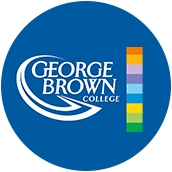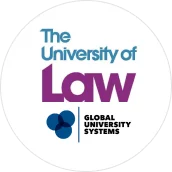• Australia
Study Intakes in Australia for International Students
6873 Reads
3 min Read
- Australian Universities offer three main intakes- February, July, and November.
- The application deadline for February intake is November, July intake is May, and November intake is September.
- Key factors to consider while considering an intake are course availability, application deadlines, visa processing time, and career goals.
Australia, a land of stunning landscapes, diverse cultures, and world-class education, has long been a top choice for international students seeking a fulfilling academic journey. With its renowned universities, high-quality teaching, and vibrant student life, Australia offers a unique and enriching experience that attracts students like you from all around the world. However, understanding the different study intakes in Australia is crucial for planning your academic journey effectively. So, let's dive in and learn about the different Australian study intakes you can consider while planning to study in Australia.
Australia Study Intakes
| Intake | Description |
| Autumn (February) Intake - Primary | This is the most popular intake among international students, aligning with the end of summer in Australia. It offers the widest range of courses and the most scholarship opportunities. |
| Spring (July) Intake - Secondary | Known as the mid-year intake, this is a good option for students who missed the February intake or need more time to prepare. It still provides a diverse range of courses. |
| Summer (November) Intake - Minor | November intake is less common and typically includes a limited number of courses. This intake can be a particularly attractive option for students who couldn't apply for other intakes. |
Which Study Intake to Choose in Australia?
- Course Availability: Not all courses are offered every semester. Do your research to find the specific courses you wish to pursue and when they may be available. This can help weed out intakes that do not offer the courses you wish to apply for.
- Application Deadlines: The application deadline is different for each intake, so it is important to prepare for the application process in advance and track the deadlines for universities and their programs. Tracking the deadlines allows you to avoid missing the dates and apply on time.
- Visa processing times: Applying for a visa takes time, so you must consider this while selecting your intake. Also, some intakes take longer than others to process your visa, so do proper research before finalizing your decision.
- Personal factors: Consider any personal concerns that could affect your study abroad journey, such as your level of academic preparedness, your financial status, and family obligations. In such a case, choosing an intake that gives you extra time to prepare for studies or do other things you must attend to is better.
- Career Goals: Reflect on your long-term career goals and how the intake you choose will help achieve them. Some intakes might offer specific courses or internships that could be helpful for further career prospects, so consider those also.
Since so many factors need to be considered, you must research the universities you're interested in and know which intakes they are offering. You can narrow your options and choose the right university for your goals and requirements by contacting study abroad Consultants like Canam.
Benefits of Each Study Intake in Australia
| Intake (Semester) | Benefits |
| February Intake (Semester 1) |
|
| July Intake (Semester 2) |
|
| November Intake (Semester 3) |
|
How to Apply for a Study Intake in Australia?
Research and Shortlist Universities
- Identify your academic goals: Determine the course or program you want to pursue and the level of qualification (e.g., undergraduate, postgraduate).
- Explore Australian universities: Research universities known for offering your desired course or program. Consider factors like rankings, reputation, location, and student life.
- Check intake availability: Verify your chosen universities' intakes for your desired course.
- Compare admission requirements: Assess each university and course-specific academic and language requirements.
- Create a shortlist: Based on your research, narrow down your options to a few universities that best align with your goals and preferences.
Prepare for Standardized Tests
- Determine test requirements: Check if your chosen course requires specific standardized tests, such as IELTS, TOEFL, or GRE.
- Register for tests: Book your test dates well in advance to avoid delays.
- Prepare and practice: Study for the tests and practice with sample questions to improve your scores.
Submit Application Forms
- Gather required documents: Prepare all necessary documents, including academic transcripts, English language test scores, statement of purpose, letters of recommendation, and passport copies.
- Complete application forms: Carefully fill out the application forms for each university you've shortlisted.
- Meet deadlines: Ensure you submit your applications before the deadlines to avoid late penalties.
- Pay application fees: Some universities may require application fees.
Receive Acceptance Letters
- Monitor your applications: You can check the status of your applications through the university's online portals or by contacting them directly.
- Review offer letters: If you receive offer letters, carefully review them to understand the conditions and requirements.
- Confirm enrollment: Follow the instructions in the offer letter to confirm your enrollment and pay any required deposits.
Apply for an Australian Student Visa:
- Gather necessary documents: Prepare the documents required for your student visa application, such as your passport, offer letter, financial evidence, and health insurance.
- Submit your application: Lodge your visa application with the Australian embassy or consulate in your country.
- Attend a visa interview: If required, attend a visa interview to provide additional information or clarify any questions.
- Wait for visa approval: The visa processing time may vary, so plan accordingly.
Conclusion
FAQ
Get great articles direct to your inbox
The latest news, articles, and resources, sent straight to your inbox every month.
Popular Universities to Study Abroad
World class education waiting for you.

James Cook University - Singapore Campus
Central Region, Singapore • 42 Programmes
Tuition Fee : SGD 0-0 / year

George Brown College - St. James Campus
Ontario, Canada • 92 Programmes
Tuition Fee : CAD 17000-30000 / year

Global University Systems (GUS) - The University of Law - Manchester Campus
England, UK • 38 Programmes
Tuition Fee : GBP 11000-17000 / year

Red River College Polytechnic - Notre Dame Campus
Manitoba, Canada • 44 Programmes
Tuition Fee : CAD 13500-22000 / year


INTO Group - The University of Oklahoma
Oklahoma, USA • 248 Programmes
Tuition Fee : USD 30000-32000 / year

Suncrest College - Yorkton Campus
Saskatchewan, Canada • 9 Programmes
Tuition Fee : CAD 17000-24500 / year

Dimensions International College - Main Campus
North Region, Singapore • 35 Programmes
Tuition Fee : SGD 0-0 / year
Popular English Language Proficiency Exams
Blogs and Articles
Curated content to keep you updated on the latest education trends, news and more.
Updated on • Jul 17,2025 05:33 PM IST • USA
PTE Accepted Universities in Australia
Updated on • Jul 17,2025 05:09 PM IST • PTE
Part-Time Jobs for International Students in Australia
Updated on • Jul 17,2025 03:44 PM IST • Australia
Updated on • Jul 12,2025 04:02 PM IST • USA
Updated on • Jul 11,2025 11:32 AM IST • Education
CPT vs OPT: Meaning, Difference, and How to Apply
Updated on • Jul 11,2025 10:40 AM IST • USA
Masters in Computer Science in UK: Top Colleges, Eligibility, Scholarships
Updated on • Jul 10,2025 11:29 AM IST • study in the UK
Highest Paying Jobs in the World
Updated on • Jul 08,2025 01:40 PM IST • Study Abroad
MBA in Australia for Indian Students: Best Universities, Requirements, Scholarship, Courses, Jobs
Updated on • Jul 08,2025 01:35 PM IST • Australia
Canada vs Australia: Which Country is Better for Indian Students in 2025?
Updated on • Jul 07,2025 12:46 PM IST • Education
France vs Germany: Which Is Better for International Students?
Updated on • Jun 30,2025 05:15 PM IST • Education
Top 10 Agricultural Universities in USA
Updated on • Jun 27,2025 05:25 PM IST • USA
Most In-Demand Future Careers in 2025
Updated on • Jun 26,2025 04:41 PM IST • Education
How Much Do Nurses Make in the U.S.?
Updated on • Jun 23,2025 03:59 PM IST • USA
Updated on • Jun 21,2025 02:00 PM IST • USA
MBA in UK: Universities, Eligibility, Types, and Career Opportunities
Updated on • Jun 19,2025 04:09 PM IST • UK • study in the UK
Scholarships in France for Indian Students
Updated on • May 29,2025 05:22 PM IST • France
Intakes in Dubai for Indian Students
Updated on • May 27,2025 03:34 PM IST • Study in Dubai
France Student Visa 2025 – Requirements, Fees, Checklist & Application Process
Updated on • May 23,2025 03:36 PM IST • France
MBA in France for Indian Students in 2025
Updated on • May 22,2025 05:35 PM IST • France
Related Blogs and Articles
A little effort to provide an authentic and reliable content for keen readers!!
Part-Time Jobs for International Students in Australia
Updated on • 17-07-2025 • Australia
MBA in Australia for Indian Students: Best Universities, Requirements, Scholarship, Courses, Jobs
Updated on • 08-07-2025 • Australia
MBBS in Australia: Top Universities, Syllabus, Cost of Study, Eligibility, Scholarships & Jobs
Updated on • 22-05-2025 • Australia
MBA Finance in Australia: Universities, Eligibility, Scholarships and Job Opportunities
Updated on • 28-04-2025 • Australia
Facts to Know Before Studying in Australia
Updated on • 28-04-2025 • Australia
Masters in Project Management in Australia
Updated on • 25-02-2025 • Australia
Public Relations (PR) Courses in Australia
Updated on • 07-02-2025 • Australia
February Intake in Australia: Timeline, Courses, Universities, Deadlines & More
Updated on • 01-02-2025 • Australia
What makes Australia a preferred study destination for Indians?
Updated on • 10-01-2025 • Australia
Updated on • 20-12-2024 • Australia
Bachelor of Nursing Courses in Australia
Updated on • 30-11-2024 • Australia
Post Study Work Permit in Australia
Updated on • 18-11-2024 • Australia
Australia Study Visa - Requirements, Process, Fee, How to Apply & More
Updated on • 08-10-2024 • Australia
Highest Paying Jobs in Australia for International Students
Updated on • 23-09-2024 • Australia
Why Australia is Better Than Other Countries for Study?
Updated on • 11-09-2024 • Australia
Master of Social Work (MSW) in Australia
Updated on • 10-08-2024 • Australia
Top 10 Benefits of Studying in Australia for Indian Students
Updated on • 15-07-2024 • Australia
Australian Student Visa Interview Questions and Answers
Updated on • 11-07-2024 • Australia
Why should you Study Civil Engineering in Australia?
Updated on • 28-06-2024 • Australia
Updated on • 12-06-2024 • Australia












